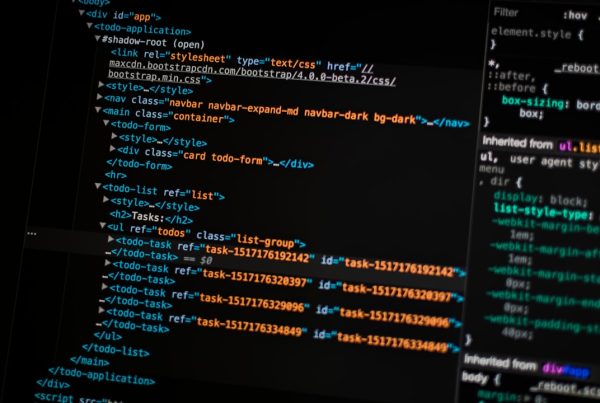SQL injection attacks represent one of the most prevalent and dangerous threats to web applications today. As you navigate the digital landscape, it’s crucial to grasp how these attacks function and the potential damage they can inflict. At its core, an SQL injection occurs when an attacker manipulates a web application’s database query by injecting malicious SQL code into input fields.
This can lead to unauthorized access to sensitive data, data corruption, or even complete control over the database server. Understanding this vulnerability is the first step in safeguarding your applications. When you consider the implications of SQL injection, the risks become even more apparent.
Attackers can exploit poorly designed input validation mechanisms to execute arbitrary SQL commands, allowing them to retrieve confidential information such as user credentials, personal data, or financial records. In some cases, they may even alter or delete data, leading to significant operational disruptions. As you delve deeper into the world of cybersecurity, recognizing the signs of SQL injection attempts and understanding how they can be mitigated will empower you to protect your applications more effectively.
Key Takeaways
- SQL injection attacks exploit vulnerabilities in input validation
- Best practices for input validation include using parameterized queries
- Implementing the least privilege principle limits the access of users and applications
- Regularly updating and patching software helps to prevent vulnerabilities
- Utilizing web application firewalls adds an extra layer of security
- Educating developers and staff on security best practices is crucial
- Monitoring and logging for suspicious activity can help detect and prevent attacks
Best Practices for Input Validation
Input validation is a critical line of defense against SQL injection attacks. As you develop your applications, it’s essential to implement robust validation mechanisms that ensure only expected and safe data is processed. This involves defining strict rules for what constitutes valid input based on the context in which it will be used.
For instance, if a field is meant to accept numeric values, you should enforce that only numbers are allowed, rejecting any input that deviates from this standard. By doing so, you significantly reduce the risk of malicious code being executed. Moreover, it’s important to adopt a whitelist approach when validating input.
Instead of merely filtering out known bad inputs, you should specify exactly what is acceptable. This proactive strategy minimizes the chances of inadvertently allowing harmful data through your validation checks. Additionally, consider implementing server-side validation in conjunction with client-side checks.
While client-side validation can enhance user experience by providing immediate feedback, it can be bypassed by attackers. Therefore, ensuring that your server-side validation is robust and comprehensive is vital for maintaining security.
Using Parameterized Queries

One of the most effective methods for preventing SQL injection attacks is the use of parameterized queries. When you utilize parameterized queries, you separate SQL code from user input, which prevents attackers from injecting malicious SQL commands into your queries. This technique allows you to define placeholders in your SQL statements that are later replaced with actual user input in a safe manner.
By doing so, you ensure that any input provided by users is treated strictly as data rather than executable code. Implementing parameterized queries is not only a best practice but also a straightforward process in most programming languages and database management systems. For instance, if you are using languages like Python or PHP, libraries such as PDO or prepared statements make it easy to create parameterized queries.
As you adopt this approach in your development practices, you will find that it not only enhances security but also improves code readability and maintainability. By clearly delineating between code and data, you create a more structured and less error-prone environment for your applications.
Implementing Least Privilege Principle
| Metrics | Value |
|---|---|
| Number of users with elevated privileges | 25 |
| Number of access control violations | 3 |
| Percentage of systems with least privilege implemented | 80% |
The principle of least privilege is a fundamental concept in cybersecurity that dictates that users and applications should only have the minimum level of access necessary to perform their functions. As you design your systems, applying this principle can significantly reduce the potential impact of an SQL injection attack. By limiting database permissions for your applications, you can ensure that even if an attacker successfully exploits a vulnerability, their access will be restricted to only a small subset of data or functionality.
To implement the least privilege principle effectively, start by conducting a thorough review of user roles and permissions within your application. Identify which users require access to specific data and functionalities and assign permissions accordingly. Additionally, consider creating separate database accounts for different application components, each with tailored permissions based on their specific needs.
This layered approach not only enhances security but also simplifies auditing and monitoring efforts, allowing you to quickly identify any unauthorized access attempts.
Regularly Updating and Patching Software
Keeping your software up to date is one of the simplest yet most effective ways to protect against SQL injection attacks and other vulnerabilities. As you manage your applications and systems, make it a priority to regularly check for updates and patches from software vendors. These updates often include critical security fixes that address known vulnerabilities, including those that could be exploited through SQL injection techniques.
In addition to applying updates promptly, it’s essential to maintain an inventory of all software components used within your applications. This includes not only your primary application code but also third-party libraries and frameworks that may introduce vulnerabilities if left unpatched. By establishing a routine for monitoring and updating all software components, you can significantly reduce your exposure to potential attacks and ensure that your applications remain secure against evolving threats.
Utilizing Web Application Firewalls

How a WAF Works
A WAF acts as a filter between your web server and incoming traffic. By analyzing requests in real-time, it can identify and block malicious traffic before it reaches your application, effectively mitigating the risk of SQL injection attempts.
Choosing the Right WAF Solution
When selecting a WAF solution, look for features that specifically address SQL injection prevention. Many modern WAFs come equipped with predefined rulesets designed to detect and block common attack patterns associated with SQL injection. Additionally, consider solutions that offer customizable rules so you can tailor the firewall’s behavior to suit your specific application needs.
Enhancing Your Defense Posture
By integrating a WAF into your security strategy, you enhance your overall defense posture while allowing your development team to focus on building robust applications without constantly worrying about external threats.
Educating Developers and Staff
One of the most critical aspects of maintaining application security is ensuring that everyone involved in the development process understands the risks associated with SQL injection attacks and other vulnerabilities. As you foster a culture of security awareness within your organization, consider implementing regular training sessions for developers and staff members. These sessions should cover best practices for secure coding, common attack vectors like SQL injection, and the importance of adhering to security protocols throughout the development lifecycle.
Encouraging open communication about security concerns is equally important. Create an environment where developers feel comfortable discussing potential vulnerabilities or asking questions about secure coding practices without fear of judgment. By promoting collaboration between development teams and security professionals, you can cultivate a proactive approach to security that empowers everyone involved in the application development process to contribute to a more secure environment.
Monitoring and Logging for Suspicious Activity
Finally, establishing robust monitoring and logging practices is essential for detecting and responding to potential SQL injection attacks in real-time. As you implement logging mechanisms within your applications, ensure that they capture relevant information such as user inputs, query execution times, and error messages generated by database interactions. This data can provide valuable insights into unusual patterns or behaviors indicative of an attempted attack.
In addition to logging activities, consider implementing automated monitoring tools that can analyze logs for suspicious activity continuously. These tools can alert you to potential threats as they arise, allowing for swift action before any significant damage occurs. Regularly reviewing logs and monitoring alerts will enable you to identify trends or recurring issues that may require further investigation or remediation efforts.
By prioritizing monitoring and logging as part of your security strategy, you enhance your ability to detect and respond to SQL injection attempts effectively. In conclusion, understanding SQL injection attacks and implementing comprehensive security measures is vital for protecting your applications from potential threats. By focusing on best practices such as input validation, parameterized queries, least privilege principles, regular updates, WAFs, staff education, and vigilant monitoring, you can create a robust defense against these pervasive vulnerabilities.
As you continue to navigate the complexities of application security, remember that proactive measures are key to safeguarding your digital assets from evolving threats in an increasingly interconnected world.
To further enhance your understanding of cybersecurity measures against SQL injection attacks, I recommend reading an insightful article available on Cyber Security Decoder. This article delves into various strategies and best practices that can significantly bolster your defenses against such vulnerabilities. You can access the article directly by clicking on this link: Stopping SQL Injection. It provides a comprehensive overview that is beneficial for both beginners and experienced IT professionals looking to strengthen their cybersecurity protocols.
FAQs
What is SQL injection?
SQL injection is a type of cyber attack that allows hackers to execute malicious SQL statements in a web application’s database. This can lead to unauthorized access, data manipulation, and data theft.
How does SQL injection work?
SQL injection works by inserting malicious SQL code into input fields on a website, such as login forms or search boxes. When the website’s database processes this input, the malicious code is executed, allowing the attacker to access or manipulate the database.
What are the potential risks of SQL injection?
The potential risks of SQL injection include unauthorized access to sensitive data, data manipulation or deletion, and the ability to execute administrative operations on the database. This can lead to data breaches, financial loss, and damage to an organization’s reputation.
How can SQL injection be prevented?
SQL injection can be prevented by using parameterized queries, input validation, and proper error handling in web applications. Additionally, using web application firewalls and regularly updating software can help protect against SQL injection attacks.
What are some best practices for preventing SQL injection?
Some best practices for preventing SQL injection include using prepared statements or parameterized queries, validating and sanitizing input data, and limiting the privileges of database accounts used by web applications. Regular security testing and code reviews can also help identify and address potential vulnerabilities.



